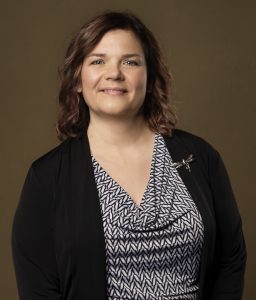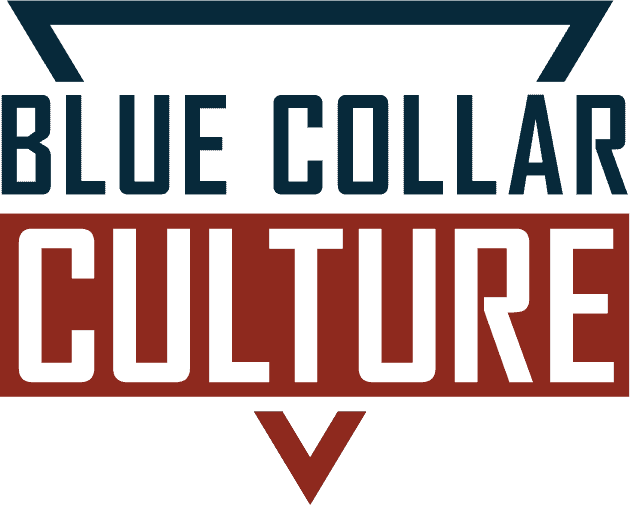
Construction touches everything. In this industry, you have the ability to hire women of various strengths. They can be business owners, tradeswomen, architects – the list goes on! Today’s guest is Anne Pfleger, the National President of the National Association of Women in Construction (NAWIC). Joining Ryan Englin and Jeremy Macliver on the show, Anne shares her strategies in attracting and recruiting women into construction. Oftentimes, women may see a position and refuse to apply because they think they’re not completely qualified. Reaching out to NAWIC and setting up conversations with these women and their employers help showcase their capabilities. Tune in to get more valuable insights!
—
How To Double Your Ability To Hire With Anne Pfleger
We are so excited about this episode’s guest because, as many of you know, hiring good people in construction is a challenge. It has been for a while, and it’s only seeming to get harder. Our guest has a little secret for you. In fact, she’s been in construction for most of her professional career, estimating, safety, HR, IT. She has done it all. She’s got this internal purpose and passion to not only improve but to support and guide other women in the construction industry to do the same. She is the National President of the National Association of Women in Construction. She wants to get the word out on how to double your ability to hire by attracting and recruiting women into construction. I want to welcome my guest, Anne Pfleger.
—
What’s the biggest myth about the construction industry?
The biggest myth is that women are not welcome in the construction industry. That, more than ever, is incorrect. I said something about being about 10%, people still call it a male-dominated industry. It’s not. It’s male populated. Women are making a difference in the industry.
Why do you think that myth exists still?
As women, or even men, are coming up in the construction industry, they aren’t seeing the women and what they’re doing. What we’re trying to do is become more in the forefront so that you can see us. When people see women working in these roles, then they will say yes, we are indeed welcome to work in construction with everybody else.
One of the questions I’d love to get answered. A lot of the work I do in the construction industry is helping fill frontline positions, find craftworkers and laborers. Every time we got to fill out an EEO report, there are always the questions like why aren’t more women applying? As much as I wish I had a real answer for that, what do you think is going on?
What I think is going on is that women will not apply for a position unless they meet 100% of the criteria in that position. Whereas men are 60%, 65%. What’s happening is, women may see a position, “I’m not completely qualified, so I’m not going to apply.” What we need to do to help correct that is reaching out to associations like NAWIC and other women in the community to try and get somebody’s resume, and then set up a conversation with them. Women shine when they’re in the interview, they can show a potential employer what their capabilities are.
The biggest myth is that women are not welcome in the construction industry. That, now more than ever, is incorrect. Click To TweetWomen bring a different perspective to the workplace. For a lot of employers, that new perspective can be a breath of fresh air because it’s different. It’s things that they’ve never thought about. I have one client, they got 130 people in the field and one woman. She’s on pace to be their next superintendent. She approaches the problems differently. One of the myths I hear a lot about is, “The men don’t want to report to a woman.” At least watching her go through what she’s going through, the men are like, “I’ll follow her,” because she makes it easier. We get done faster. The boss isn’t breathing down our neck. There are so many differences that come with having her in that position.
That’s a great point. Seeing women actually doing that. The men are seeing how she is moving up to become a superintendent. What we also all need to remember is that when a person is put in a position, they’re put there for a reason, for their knowledge and expertise, but we are all also human and continuing to learn throughout our entire lives. When we ask questions, it’s not because we don’t have the knowledge or the expertise, it’s because we’re trying to learn, be more productive, and make it a better project or help out on the team, whatever that may be in the situation.
I imagine that you talk to a lot of business owners about women in construction, their recruiting efforts, and everything else. Big picture, not just recruiting but what do you think is holding most business owners back? Construction has a lot of challenges that they’re dealing with. What do you think is the number one thing holding them back?
They’re not having conversations with their employees, especially the female employees. I’m sure that everybody has heard that it’s got to come from the top down. That’s true, but the top also needs to be following up and making sure that whatever policies or opportunities that they’re giving are across the board for everybody. It’s important for employees, and it’s not women, that they’re being heard. The owners need to take that extra time and listen to what their employees are saying.
That’s one of the things that has been different from the work that I do in the construction areas. A lot of times, we’ll come in and we’ll start talking about the labor shortage. You know nothing about it, you’ve never heard that. The construction industry has had a labor shortage for 100 years, it’s never gone away. I hear so many people complain about the lack of good people, “There is nothing but bad people out there,” and all this other stuff. One of the different approaches that we take is we say, “These are human beings with personal dreams and goals. They are not a cog in a machine.” It’s amazing what a conversation can do about what’s happening in their world versus thinking about them like, “No, they’re a pair of hands. When those hands don’t work, I go get another pair of hands.” A lot of times, owners get so distanced from the field, they forget that.
That’s a good example.
What is NAWIC doing to help business owners change that and take a different approach towards the way they communicate with people, bringing awareness to women in the industry, and those kinds of things?

It’s been a goal on our strategic plan for a while. We have a Diversity, Equity, and Inclusion Standing Committee in the association. One of the things that the committee is working on is information for employers to be able to recruit and retain female employees that we can then share with the companies. Also, many of our members want to talk to the owners. We can attend if you have business owner conferences. Having NAWIC members come and talk at those conferences also helps because then they’re hearing from the women that are working in the field, or maybe they’re on the administrative side, even a project manager and an engineer. You’re hearing from them, the people that are actually putting the projects together for the owners.
Boots on the ground, frontline. They know what it’s like if they’re having that. That’s great. These business owners are struggling because they’re not on the front lines. NAWIC is saying, “Let’s bring people from the front lines, have those conversations, and open up the dialogue.” What are two actions that owners can do, things that they can do to help them break through that?
Having conversations one on one with their employees, especially their female employees. My boss, every day he’ll come down usually in the morning with his cup of coffee, and asks how I’m doing, what I’m working on, is there anything I need help with, or do I have any ideas? That’s the other great thing, have them ask, “Do you have any ideas?” As you mentioned about how women have a different perspective, they have a lot of great ideas that could help the company grow. That’s something that NAWIC supports. We launched our new tagline, “Leading builders. Building leaders.” We’re helping our members to be able to be supportive and grow their companies that they work for.
I heard you say that bringing women into the conversation is partly how they can do this. We’ve got a construction company, 50 men in the field, no women. It’s hard to do that if you don’t have any women on the team. What do you see working for some of your members to attract women into construction, to bring them into the industry?
We have a lot of different initiatives that we are working on to educate women about the construction industry and how it is a viable career. Starting as early as grade school, we have programs to get them interested in construction. It’s been interesting because, in the last years, high school guidance counselors are allowing us to come in and talk about construction. It’s finding all the niches where females and young women are to encourage them to look at the construction industry. In addition, I would suggest that owners reach out to the local NAWIC chapters to come and talk to those 50 men that are working in the field. Maybe they can understand a little bit more and get to know what work women do in the construction industry and how we can be part of the team. That will encourage women to want to come and apply to companies.
One of the arguments that I could see coming up is, “I get it. We want women in the industry but they want the office jobs. They want to work behind the computer.” Help me break that one down because I’ve heard that said before.
Women have been, in the past, were supposed to be in the administrative part of the careers. That is not how women are now. We want to get our hands dirty. More women are wanting to do that because especially with our size, women make good electricians. There’s a lot of times when we have to get into small spaces. Also, we’re more towards the tendency of not being colorblind, which is important when you’re an electrician.
Women have a different perspective, they have a lot of great ideas that could help the company grow. Click To TweetWe have programs set up to encourage girls to work with their hands. We have camps called Camp NAWIC. It’s a week long for junior high girls to get together, they learn about construction. They’ll do masonry. They’ll do plumbing. They’ll do electrical. They’ll work on equipment. That’s another great field that women enjoy, equipment operators. When you work it out on the roads, I bet if you watch, you’ll see women working in those fields as well.
I’m starting to see more and more women get into the fields. They’re usually more in the supervisory positions. How do we get them into the skilled labors? You said electrician, so if I’m an electrical contractor, I’m sitting here thinking, “I think I’d go to four years of school.” That’s a long time to invest in that. What are some things that we can do to help solve some of the issues that contractors are feeling?
With the four years of training, if you’re working in an apprenticeship program, you’re usually working and going to school. You are getting paid as an apprentice. Most times, when you’re going to college, you have to pay to go to college. You’re probably not employed. That is something that’s different about the construction industry. Yes, you are going through training, but you’re also working on the job, getting hands-on experience, and being paid for the work that you’re doing.
It’s educating the schools. We’re seeing more panel discussions. They’re asking us to come in and talk to their students to encourage them to get into these fields. Unfortunately, until we regularly get into the schools, which we are doing, there is going to be a little bit of a gap. We’re going to see a huge push of women in the industry in the next 5 to 7 years because we have been working so hard reaching out to those girls that are in junior high school.
I was working with someone a few years ago, a plumbing contractor, and they wanted to bring women to the industry. It’s a women-owned third-generation plumbing contractor. It was in the roots of the family, and they started this competition. It was an annual competition where they would go to the high schools, and they would bring the girls in, and they would do a plumbing competition where they’re sweating pipe or installing a toilet.
It was a fun thing to bring awareness to them but we found that a lot of the girls weren’t interested. How do we make these industries more interesting for them? I get you say bring women into the workforce. It can help change the culture, it can make recruiting easier, and it can fix a lot of these things. How do we do it? How do we get down to it? I get awareness and education, but what have you seen work?
Women seeing women. The young girls seeing those of us working in the construction on the field, and promoting that wherever we can. Showing them that you could do this too. Letting them know about the pay availability. There are a lot of single moms out there and they can make enough money to support their family by themselves. That’s why I said it’s going to be probably 5 to 7 years before we start the increase from the work that we’re doing because we are seeing more women seeing women working in the industry. It’s like a trickle down.

We got to get through those years to get those girls graduated from high school to do that. We also need to continue to educate them. Once we give them a taste of it, you got to keep that in the forefront with them so that when they get to the graduation stage, they’re ready to do it. I’m sure that everybody knows, women are known for changing their minds. If you keep that construction right there, that encourages them to get into the field when they graduate.
That goes with anything, you got to keep your people engaged. A lot of times, that comes from the human connection element, for sure. One thing I also want to echo what you said was, yes, we can train people up through an apprenticeship program. I can’t tell you how many times I talked to people, they’re like, “We have an apprenticeship program.” It’s like, “We send them out with this guy over here for a week, they learn the ropes, and then we turn them loose.” That’s not an apprenticeship program. If you don’t have one, find out how to get your apprenticeship program accredited and make it a real thing so that these people get the skills they need.
That goes to what I was saying about follow through. You can have any program in writing, but unless you enact it, stand by it, and continue it, you won’t get what you need out at the end of it if you’re taking shortcuts, or not taking the time to educate the new people about their jobs.
If you had one piece of advice for our readers, if you want to get more women involved in your company, or even in the local community and construction, what would you tell them to do? Something they can do quickly. What would you tell them to do so that they could actually make an impact here?
Reach out to the local NAWIC chapter and start the conversations with those women that are local.
Partner with NAWIC. Get to know your NAWIC chapter. You got chapters all over the place, right?
Yeah, we have 117 chapters across the country in almost every state. We’re chartering more. We’ve already chartered two in 2021. We got at least two more that will go. It’s exciting. If they’re not sure what their local chapter is, they can always go to our website, and we can help you find your local chapter. The women across the country are always excited to talk to anybody about encouraging women to get into the industry.
Women have been, in the past, more into the administrative part of their careers. That is not how women are now. Click To TweetWhat would you say are the 2 or 3 industries that need to hear that? You see women starting to get involved in the industry, you see them advancing through the industry, who are the people that we need to reach? You already said electricians, I would put that as one because women can get into places sometimes. What are some other industries that need to hear that message and get in front of your local NAWIC chapter?
Plumbing pipefitters is another one that women are attracted to. Believe it or not, ironworkers and welding. That’s another that has a higher percentage of women working in the field. Those would be my other two.
Between Jeremy and I, we know a few ironworkers out there.
The way that I’ve seen a lot of great ironworkers and welders, they have a set of skills for precision that is impressive. Definitely seeing that.
Give us your website so that people can learn more about you.
It’s www.NAWIC.org.
Lots of great content, connections, and learned about the impact that women are having in the industry. As someone who’s always recruiting, we’re always looking for how do we attract new people into the industry. It’s no secret that most of our field workers in construction are going to be aging out soon. There’s a lot of older generations in the construction industry and we got to start attracting the younger generations. We are going to have a more difficult time finding people so.
The message here is don’t discount women. They’re good at this stuff, and they can do amazing things for your company and your company culture. Anne, thank you so much for being here. I’ve enjoyed our conversation. It has given me a different perspective. I’ve got some people that we’re going to be calling on to say, “Reach out to your local NAWIC chapter,” because there are some opportunities there, especially to get more involved with women in construction.

That’d be great. Another way is companies can also sponsor events of NAWIC chapters to get the word out about women in the industry as well. That would be another opportunity for companies to do.
What are some of the events that you are doing?
We have our camp NAWIC, it’s usually a week long. Not all of our chapters do that, but some of our chapters do, and they’re always looking for sponsors to get the materials for the young girls to work on. We also do programs. We have a Legos competition for grade school. We have a build a shed program for junior high. We then do design drafting for high school and early college levels. We’re always looking for sponsorships for those programs for the students.
Thank you, Anne. We enjoyed it. Thanks for being here.
Thank you.
Important Links:
About Anne Pfleger
 Experienced Estimator/Project Coordinator with a demonstrated history of working in the construction industry. Skilled in Project Estimation, Pre-construction, Contract Management, and Process Scheduler.
Experienced Estimator/Project Coordinator with a demonstrated history of working in the construction industry. Skilled in Project Estimation, Pre-construction, Contract Management, and Process Scheduler.
Strong operations professional with a Bachelor of Science (BS) focused in Business Management from University of Findlay.
Love the show? Subscribe, rate, review, and share! https://bluecollarculture.com/podcast/
